Patricia Long Legs is running and playing out in the meadow with her adopted goat siblings at my birth father Jerry’s farm, and I am thinking about genetic mirrors. The farm is named Camelot, after his last name of Knight, but everyone calls him Pop. It’s a sunny Spring day, and I am standing along a barb-wire fence watching the baby calf take on a new day. I realize it’s been 7 months since Pop and I met, so Patricia is 7 months old. But now her mom and dad are gone, and she stands alone in a field of goats. I can’t help but wonder. Will she grow up thinking she’s a goat?
The day I arrived at Camelot, Patricia’s mother, in what seemed a symbolic gesture of her appreciation for life and Pop’s new-found daughter, gave birth to her own, a beautiful female calf. Pop and his wife Susan observed how long the little calf’s legs were, how shiny the coat, how quickly she stood and tried to walk, so they named her after me. Even with an adoptive father who worked as a meat inspector at slaughter houses, never did I dream I would have a cow named after me, but somehow it certainly fits.
Now those who know me are asking themselves,’but Patricia doesn’t have long legs?’ And they would be right, I don’t. It was just that in one of the first pictures Pop and Susan ever saw of me, I was sitting in such a way that my crossed legs looked a mile long. Similarly, the pictures I had seen of Pop, standing next to an unnaturally low to the ground bird bath, had set into my mind that he was one Tall Texan.
So chewing these thoughts, while Patricia trims the fence line, I realize Pop and I both erroneously expected to meet someone tall at the top of his long driveway. Instead, I think upon laying eyes on the other we thought, ‘Hey this person is short’ and here is the kicker, ‘just like me.’
Having already met my birth mother, it was a second dose for me of ‘Wow this person looks like me,’ but it was none the less potent. My birth mother and I had found we shared matching smiles, almost identical hands and feet, even an inflexibility with how we handle the world, as well as each other.
I saw things between us that I knew to be true about myself, but not all of what I saw were things I necessarily liked about myself. A simple truth I had never considered – a mirror reflects all parts of yourself. While I discovered so much in meeting her, I still had not found the person with my eyes, my skin tone, and perhaps most importantly, the person who could mirror my personality and disposition.
True to my adoptee tendencies, I felt guilty for my disjointed feelings; that I had not found in my birth mother the profound reflection and connection for which I had so dreamed. This, of course, was not to her discredit it just was what it was.
Furthermore, had I unfairly expected her to complete me, without realizing that half the equation was missing? After meeting her, I both longed for, yet also feared my complete picture. It was as if seeing half of my reflection had made the remaining mystery parts feel even more foreign and somehow more threatening.
What if I find him and he does not match as much as I would hope either? Would that not mean that I just really don’t have a clue about myself? What if I meet them both and see nothing I recognize as my own? What if I see things in that mirror that I don’t like? Where does that leave me? Those were my fears, steeped in a mixture of insecurity and the unknown, driving up that long driveway to meet my birth father.
Not far from the driveway where we stood that day, Patricia Long Legs is now romping around in the sun with her buddies. In the last few months, she and I have come to have more in common than you might expect; and this is really what this post is about. Note the title does say “the importance of genetic mirrors in the adoptee’s world.”
Well, Patricia the long-legged calf, you see, was born into a world of short-legged goats. She had no sibling calves or cousin calves. She was the only calf on the farm, to be specific she and her parents, Mama Cow and Daddy Bull, were the only cows on the farm, period. They lived among a world of goats, and life in general was good for Patricia playing with the goats and watching the cars drive by the fence line with Mama Cow and Daddy Bull. But one day, not long after Patricia could do her own thing, Mama Cow and Daddy Bull went on let’s say a “permanent vacation” from the farm.
This, of course, left little Patricia sitting alone out there in a field of goats. Did she keep to herself? No. Like any good abandoned calf knows, she knew she must assimilate to survive. And this is why now several months later, Patricia can be found running and playing in the field kicking up her heels right along with the others. This is why she raises her long snout up into the tree branches looking longingly like she wishes to follow her adopted siblings up the leaning trunks to chew on the highest leaves; why she comes when you call “Billie Billie.”
In this video, my daughter and grandson feed Patricia the cow with my birth father (their grandfather).
The day that Pop and I witness her standing guard over the little lifeless body of a baby goat that died just after birth, my suspicions are confirmed – Patricia truly believes herself to be a Billie. Patricia stands protectively next to her sister, the grieving Mama Goat. She charges the buzzards that seek to steal the carcass away. She won’t leave her spot protecting her goat family.
Even in the more jovial times in the pasture, Pop worries that with her big feet, she might accidentally stomp one of the newest little baby goats dead just trying to play with it, or that her coming horns maybe be no match for the curly ones on the other goats’ heads.
“In time, she will figure it out,” says Pop, “and so will they.” He has no idea how much I understand that statement, in time you certainly do.
Watching her out there, the biggest prettiest goat of them all, I am reminded of my favorite childhood story ever, The Ugly Duckling. As a child, I never realized the reason I was so drawn to the poor baby duck was because it did not fit in. In 1990, Hallmark released a video version of the story that my daughter Victoria loved, and that made us both cry every time we watched it.
In one scene, the sibling ducks gang up on the Ugly Duckling in the pond, and they all sing, “You’re not one of us, it’s plain to see when it comes to ducks, you’re just ugly! Why don’t you just swim away.” It’s worth a watch if you wish to experience what most any adoptee has felt at least once in their life, and what some have felt quite often, the pain of not fitting in.
Start playing at 7:00 and end at 8:26 for the mean pond scene.
I hope in Patricia’s special case that she is just as happy being a goat as a cow. It does not look like her sibling goats are calling her ugly, all they do is want to play. Pop has promised me Patricia won’t meet a fate similar to that of her parents. I hope that when her mirror finally comes along, as I know he will, that she sees herself for the first time in his deep brown eyes, in his dark shiny coat, in his long swatty tail and hefty mooooo!
Nancy Newton Verrier writes in her book, The Adopted Child Grows Up (listed in Ten I Recommend on my sidebar) about the need for these genetic markers:
Was the little “duckling” right? Was he actually an ugly duckling? No. Of course not! He was a cygnet, a baby swan…When the ugly duckling finally saw his grownup reflection in the water and noticed a flock of swans nearby, he knew he was alright. He was beautiful and fit in somewhere.
Some of you have felt that tremendous relief when you have met your birth family. The lesson here is that living without any genetic markers can make you feel like an outcast, like the ugly duckling. Whether you have been acting like the ugly duckling or the chameleon, or anyone but yourself, no one can get to know and love you unless you become more real.
This is one good reason to find that lost family of swans to whom you belong. Not only may it answer some questions about how you got put into the duck family, but it may make you realize how beautiful you are. Ducks are beautiful, too. But they don’t look like swans. You may have to find someone who looks and acts like you to feel all right about yourself.
Standing in Pop’s driveway looking into my own eyes, I beheld the other side of my mirror. I found my eyes, my chin, and my skin, but I also found the person with a nature uncommonly like my own. In finally meeting Pop, I could clearly see all my parts for the first time – everything came into focus – a beautiful honest mosaic of my adoptive parents and family, my birth parents, and myself.
Today I realize that knowing both my birth parents is like holding a double-sided hand mirror. On my birth mother’s side, I hold it up and can see myself at a distance, perhaps reflecting where I fit into the world. I turn it over to my birth father’s side, and I can see myself magnified, as though I am looking at where I fit inside myself – the two sides of myself, my natures, those that make me whole. For me, the image is finally complete.
This blog is written in honor of the passing of Mama Cow and Daddy Bull, shown here with Patricia before their separation:
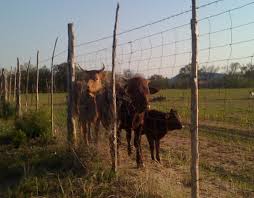
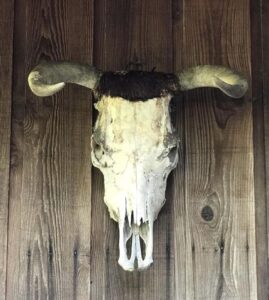 UPDATE: The first week of November 2021, Patricia Long Legs died just a few days after Pop passed as well. My tribute to her 10 years of life, a hour glass filled with the sands of time marking my and Pop’s time together can be read here.
UPDATE: The first week of November 2021, Patricia Long Legs died just a few days after Pop passed as well. My tribute to her 10 years of life, a hour glass filled with the sands of time marking my and Pop’s time together can be read here.

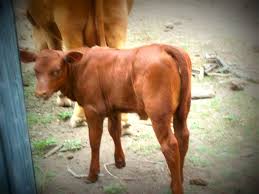
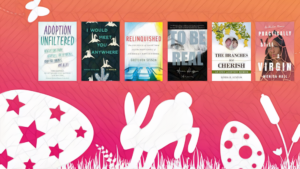

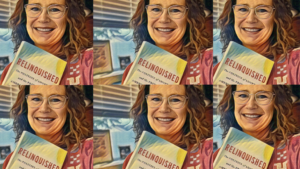
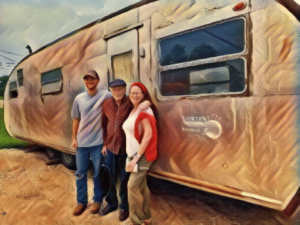
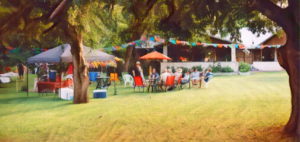
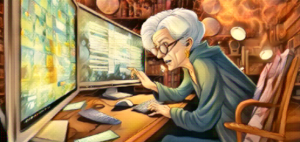

6 Responses
Another beautiful blog posting by my mother! The Ugly Goat: The Importance of Genetic Markers in the Adoptee’s World: http://t.co/3iaYs5aO
The Ugly Goat: The Importance of Genetic Markers in the Adoptee’s World: http://t.co/9IuQVM5n
I am Impressed. You obviously have great observation skills. Of course we know where you get that talent. Good job!
Yes. we do, you got them and your writing skills from ME
Thank you Patricia, I’m so enjoying your journey from a distance. It’s hard for a person who grew up in a household with a mom, dad and lots of siblings. But your writing puts you right in the middle of the story. Beautiful, I’m so happy you found your mirrors.